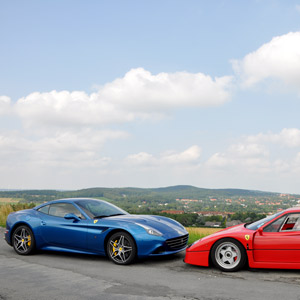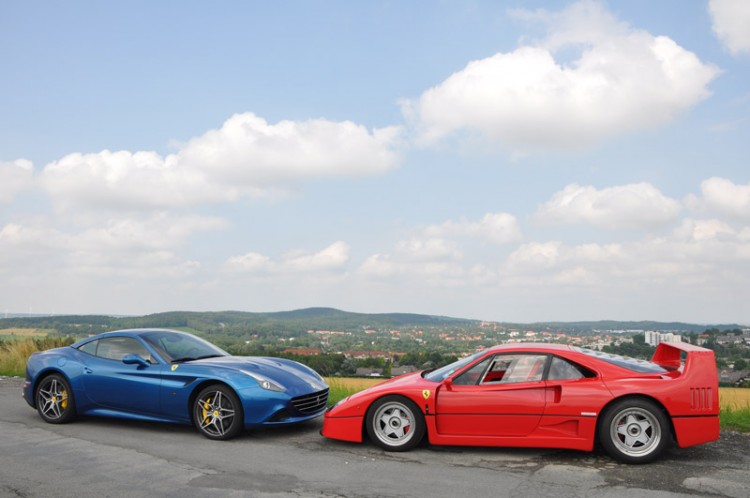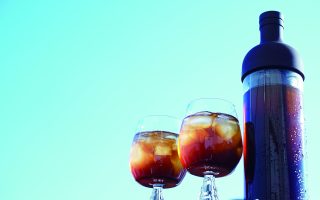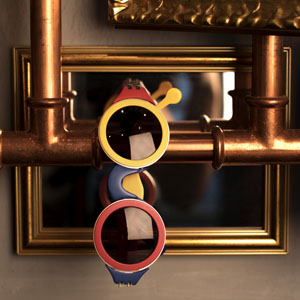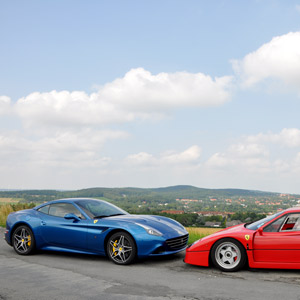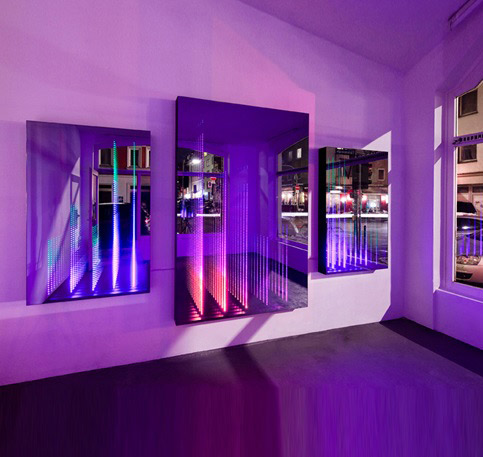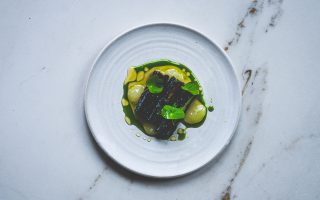The epitome of elegance, sports performance, versatility, and exclusivity
These are characteristics that have defined every Ferrari California model since the 1950s. Since its première five years ago, Ferrari has successfully sold around 10,000 of the models leading up to the California T.
Although 2014’s California, the T as in turbocharged, is chockfull of innovative ideas, the new V8 turbocharged motor is not the less among them, but rather particularly special.
The legendary Ferrari F40 from 1987 is considered to this day to be the epitome of a turbo from Ferrari! Many years have passed since then and Ferrari has again put a turbo on wheels – even in a photo comparison, there could hardly be more of a contrast.
One of the greatest challenges was recreating the distinctive and intensive roar of Ferrari’s engine. This was achieved through the use of special production engineering of the turbo housing, the flat plane crankshaft and the three-piece cast exhaust manifold, as well as thanks to meticulous tuning. During the intake as well as exhaust phases, the engine produces a powerful roar that gains in intensity with increasing rpms. It is probably the first time such a result has been achieved with a turbocharged engine.
Blue associated with the water of the lagoons
The utmost attention was given to the exterior and the interior. Two new colors were created for the coupe-convertible. The “Blu California” of the driven car accentuates the versatility and elegance of this new model and is associated with the water of the lagoons. The masterly proportions originated with the drawing pens of the Ferrari Styling Centre in collaboration with the design company Pininfarina. Dynamic and aerodynamic shapes give the body a flowing form.
Taking advantage of the latest wind tunnel studies, the rear end now sports a new diffuser with three vertical fins. The cockpit was designed as ergonomically as possible and a delight to sit in with its high quality Cuoio (in my case) leather interior by the Italian leather manufacturer Poltrona Frau. The new infotainment system, as well as cockpit and seats, are very appealing to the eye and function impeccably.
The use of the interior is so flexible that the Ferrarista can make optimal use of the trunk even when the top is down, thanks to the opening between the luggage compartment and the rear seats – especially with the leather luggage or golf bag, whose color is identical to that of the leather interior. In addition, the 340 liter trunk has a gratifyingly low loading height.
From 0 to 100 km/h (62.14 mph) in 3.6 seconds
The Ferrari V8 turbocharged engine, with 3855 cc and 560 peak hp (412 kW) at 7,500 rpm, delightfully delivers between 2,500 and 5,500 rpm in seventh gear with 755 Nm of torque (!) This torque curve is limited in the first three gears to a low torque of 555 Nm, but then increases steadily, as does a normally aspirated engine, to its maximum at 6,000 rpm.
The advantage of charging with a turbocharger is that the engines can deliver their high performance on demand, whenever it is needed. The smaller turbo engine runs more economically when cruising, however, than a normally aspirated engine with greater displacement. According to factory specifications, the spurt with Launch Control from 100 km/h in 3.6 seconds to 200 km/h is achieved in 11.2 seconds – that is absolutely believable, as believable as the result shown on the numeric speed display: three, zero, six – and – everything’s O.K, in whatever automotive respect – probably all of them!
The panache of a sports car
This Ferrari delivers real sports car dynamic, thanks, as well, to its very direct steering and a once again improved response behavior owing to a new configuration of the steering gears and suspension. New shocks and the latest generation MagnaRide adaptive suspension that reacts 50 % quicker, in conjunction with body-motion accelerometers, reduce roll and pitch and provide for greater driving comfort that is nigh on perfect. The rigidity of the chassis is also extremely impressive, thanks to the aluminum frame structure.
The Ferrari California T has the latest evolutionary stage of the F1-Trac stability control system that allows maximum acceleration out of curves, accepts even greater lateral acceleration and thus demonstrates the sportive side of its personality. Furthermore, the new carbon ceramic brake discs offer even more braking performance.
Construction-wise, the new eight-cylinder engine and the control elements guarantee a constantly high degree of driving fun in all driving situations entirely in line with GT history, from sports driving under demanding conditions while operating the shift paddles mounted on the steering wheel, all the way to relaxed driving in the automatic mode with the absolutely jerk-free seven-speed, dual-clutch transmission.
And then there’s that convertible top, this complexity from the house of Webasto. The roof switch in the center console takes care of the work of folding it in 14 seconds and does it again and again…
View exclusive Magazine Print of this article
Info
Text first published in celesQue issue 06/2015
Text and Photographer: Werner Schweckendiek

